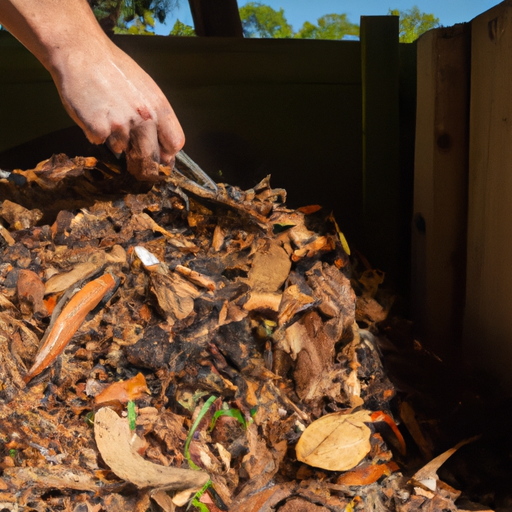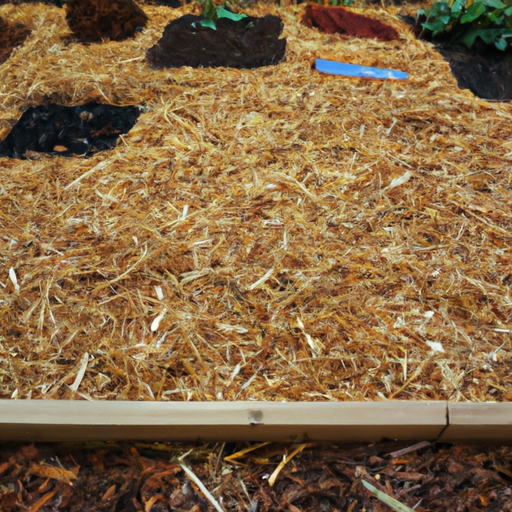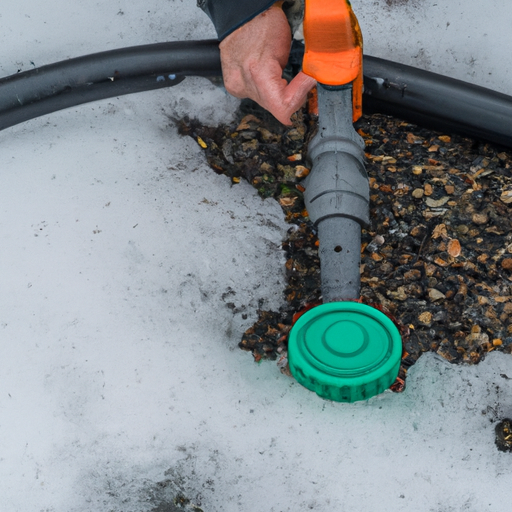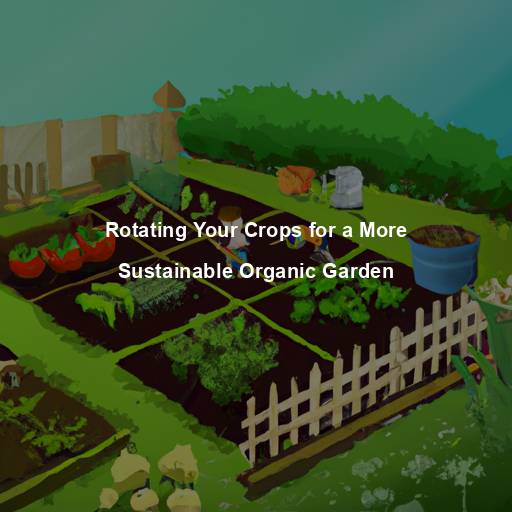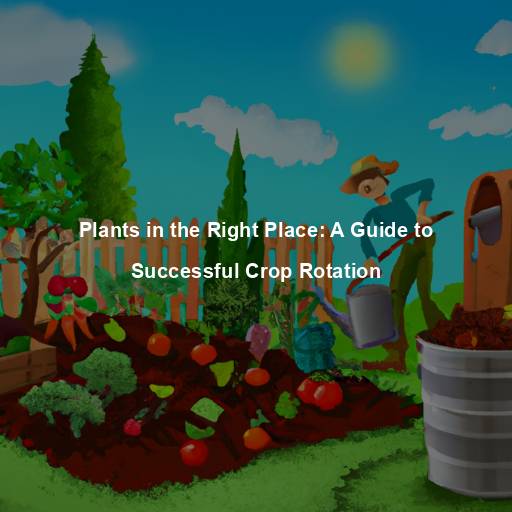Hello fellow gardeners! As a Master Gardener, I am always looking for ways to improve the health of my plants and soil.
One simple yet effective way to do this is by using organic mulch. Mulching not only helps retain soil moisture, but it also adds nutrients to the soil as it breaks down over time.
But did you know that you can easily make your own organic mulch from home? Not only is it cost-effective, but it’s also environmentally friendly since you’re reusing materials that would otherwise go to waste.
In this article, I’ll share with you some tips and tricks on how to make your own organic mulch at home using common household items and yard waste. So get ready to put those pruning shears and kitchen scraps to good use in creating nutrient-rich mulch for your garden!
Benefits Of Using Organic Mulch In Your Garden
As a Master Gardener, I cannot stress enough the importance of soil health in achieving a thriving garden. Adding organic matter to your soil can do wonders in improving its structure and fertility, which ultimately benefits the plants that grow in it.
This is where using organic mulch comes into play. Not only does it help retain moisture in the soil and suppress weed growth, but it also breaks down over time, enriching the soil with nutrients essential for plant growth.
There are various types of organic mulch available for different plants – shredded leaves or straw for vegetable gardens, wood chips or bark for trees and shrubs, and grass clippings or compost for flower beds.
By incorporating organic mulch into your gardening routine, you not only improve the health of your soil but also save money on fertilizer while reducing waste by repurposing natural materials from around your home or yard.
Materials You Can Use For Homemade Mulch
Now that you understand the benefits of mulching and why it is an essential part of maintaining a healthy garden, let’s look at some materials you can use to make your own organic mulch.
One option is leaf mulch. This type of mulch is made from fallen leaves that have been shredded or allowed to decompose over time. Leaf mulch adds nutrients back into the soil as it breaks down and helps retain moisture in dry conditions.
Another popular choice for homemade mulch is straw. Straw mulch can be used on its own or mixed with other organic matter like grass clippings or wood chips. It creates a protective layer over the soil, preventing weed growth while allowing air and water to reach plant roots.
Both leaf and straw mulch are readily available, inexpensive options that will benefit your garden in numerous ways.
Creating A Compost Pile For Mulch Production
To create a compost pile for mulch production, you’ll need to understand some basic composting techniques.
First, gather organic materials such as leaves, grass clippings, and kitchen scraps. Then layer them in your chosen composting container with browns (carbon-rich) and greens (nitrogen-rich) alternately.
Keep the pile moist but not too wet, and turn it regularly to aerate the mixture. As the organic matter decomposes over time, it will produce nutrient-rich soil amendment that can be used as mulch or added back into your garden beds.
The best composting containers include tumblers, bins, or open piles depending on your preference and available space. Just remember to avoid adding meat or dairy products to your compost pile as they tend to attract unwanted pests and slow down decomposition.
Happy composting!
Making Mulch With Yard Waste And Kitchen Scraps
As a Master Gardener, I highly recommend using yard waste and kitchen scraps to make your own organic mulch. Composting techniques are essential when creating this type of mulch.
Start by collecting yard waste such as grass clippings, leaves, and twigs in a compost bin. Add kitchen scraps like fruit peels, vegetable trimmings, and coffee grounds for extra nutrients. Keep the pile moist but not too wet, and turn it every few weeks to encourage decomposition.
Once the material has decomposed into rich humus-like soil, it’s time to apply the mulch to your garden beds. Mulch application is easy- just spread a layer over the soil surface around plants or trees. This will help retain moisture in the soil while suppressing weed growth. Additionally, adding a layer of organic matter can improve soil health by providing beneficial microorganisms with food.
Remember that making your own organic mulch from home is a sustainable way to improve your gardening practices while reducing waste. By following these simple steps and incorporating composting techniques into your routine, you’ll be able to create nutrient-rich mulch that will keep your garden happy and healthy all year round!
Tips For Applying And Maintaining Organic Mulch In Your Garden
Did you know that organic mulch not only helps with weed control but also improves water retention and soil health?
Proper mulch placement is key to maximizing these benefits. When applying, be sure to spread the mulch 2-3 inches deep around plants while keeping it away from plant stems. This ensures proper airflow and prevents moisture buildup which can lead to rotting.
Maintaining your mulch layer is just as important as its initial application. Keep weeds at bay by adding a fresh layer of mulch every year or using an organic herbicide in conjunction with your mulching routine. Additionally, regularly checking soil moisture levels under the mulch will help prevent overwatering and ensure optimal water retention for your garden’s growth.
By following these tips for applying and maintaining organic mulch, you’ll see healthier plants and a more beautiful garden in no time!
Frequently Asked Questions
Can You Use Any Type Of Wood For Homemade Mulch?
When it comes to creating your own mulch, the type of wood you choose is important. While any type of wood can technically be used for homemade mulch, some are better suited than others.
For example, hardwoods like oak and maple break down slowly and provide long-lasting nutrients to plants. Softwoods like pine and cedar decompose more quickly but can still be effective in suppressing weeds and retaining moisture in soil.
As a Master Gardener, I highly recommend using organic mulch over synthetic options as it not only improves soil health but also reduces the amount of waste sent to landfills. By using natural materials like wood chips or leaves, we can create a sustainable cycle that benefits both our gardens and the environment.
How Long Does It Take For Kitchen Scraps To Break Down Into Mulch?
When it comes to creating organic mulch, using kitchen scraps is a popular option. While some may be hesitant due to concerns about the time it takes for these scraps to break down and turn into usable mulch, there are many benefits that make it worthwhile.
Alternatives such as wood chips or straw can take longer to decompose and don’t have the same nutrient-rich qualities as kitchen scraps. In terms of timing, it typically takes anywhere from two months to a year for kitchen scraps to fully break down into mulch depending on factors like temperature and moisture levels.
But investing in this process not only helps reduce waste but also provides a cost-effective solution for nourishing your garden with natural fertilizers. As a Master Gardener, I highly recommend incorporating your kitchen scraps into your gardening routine for optimal results.
Is It Necessary To Turn The Compost Pile For Mulch Production?
To produce high-quality mulch, it’s vital to turn your compost pile regularly.
Turning the pile helps create an even distribution of heat and moisture, which accelerates decomposition and promotes nutrient-rich compost ideal for organic mulch production.
The benefits of mulching are numerous – from regulating soil temperature and retaining water to suppressing weeds and improving plant health.
To ensure effective mulching techniques, it’s best to use a mixture of different materials such as leaves, grass clippings, wood chips, kitchen scraps, and yard waste.
Remember that not all materials break down at the same rate; some may take longer than others.
By turning your compost pile every few weeks and using a diverse range of materials, you can make sure your homemade organic mulch is top-notch!
Can You Use Grass Clippings As The Sole Material For Homemade Mulch?
Ah, grass clippings – the go-to source for many gardeners looking to create their own organic mulch.
But did you know that using them as the sole material may not be the best option?
Grass clippings alternative can provide more benefits than just one type of material alone.
Mixing different types of materials like leaves, twigs and shredded bark with your grass clippings will help balance out the carbon-to-nitrogen ratio needed for optimal decomposition.
This means a faster breakdown process resulting in nutrient-rich compost that’s perfect for your plants!
As a Master Gardener, I highly recommend incorporating mixed materials into your homemade mulch recipe for healthier soil and lusher gardens.
How Often Should You Replace Organic Mulch In Your Garden?
To ensure optimal growth of your plants, it is important to know how often you should replace organic mulch in your garden.
The benefits of mulching are numerous – from conserving soil moisture to suppressing weed growth and regulating soil temperature.
However, over time, the organic material breaks down and loses its effectiveness.
To extend the life of your organic mulch, there are a few things you can do:
– Avoid placing too much mulch on top of each other as this can create an impenetrable layer that prevents water and air from reaching plant roots.
– Add fresh layers annually or biannually depending on the type of organic materials used.
– Mix different types of organic matter such as leaves, grass clippings, and wood chips to create a balanced blend that decomposes at varying rates.
By following these tips, you’ll be able to maximize the benefits of mulching while minimizing waste and effort in replacing old mulch with new ones.
Conclusion
In conclusion, making your own organic mulch from home is a great way to save money and improve the health of your garden. Remember to use only untreated wood for optimal results.
Kitchen scraps take about 6-8 months to break down into usable mulch, but turning the compost pile can speed up the process.
Grass clippings can be used as part of homemade mulch, but it’s best to mix them with other materials for better nutrition.
As a Master Gardener myself, I highly recommend replacing organic mulch every year or two for maximum benefits. Not only does this provide fresh nutrients for your plants, it also helps control weeds and retain moisture in the soil.
So why not give making your own organic mulch a try? Your garden will thank you with bountiful blooms and healthy growth!
